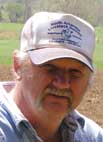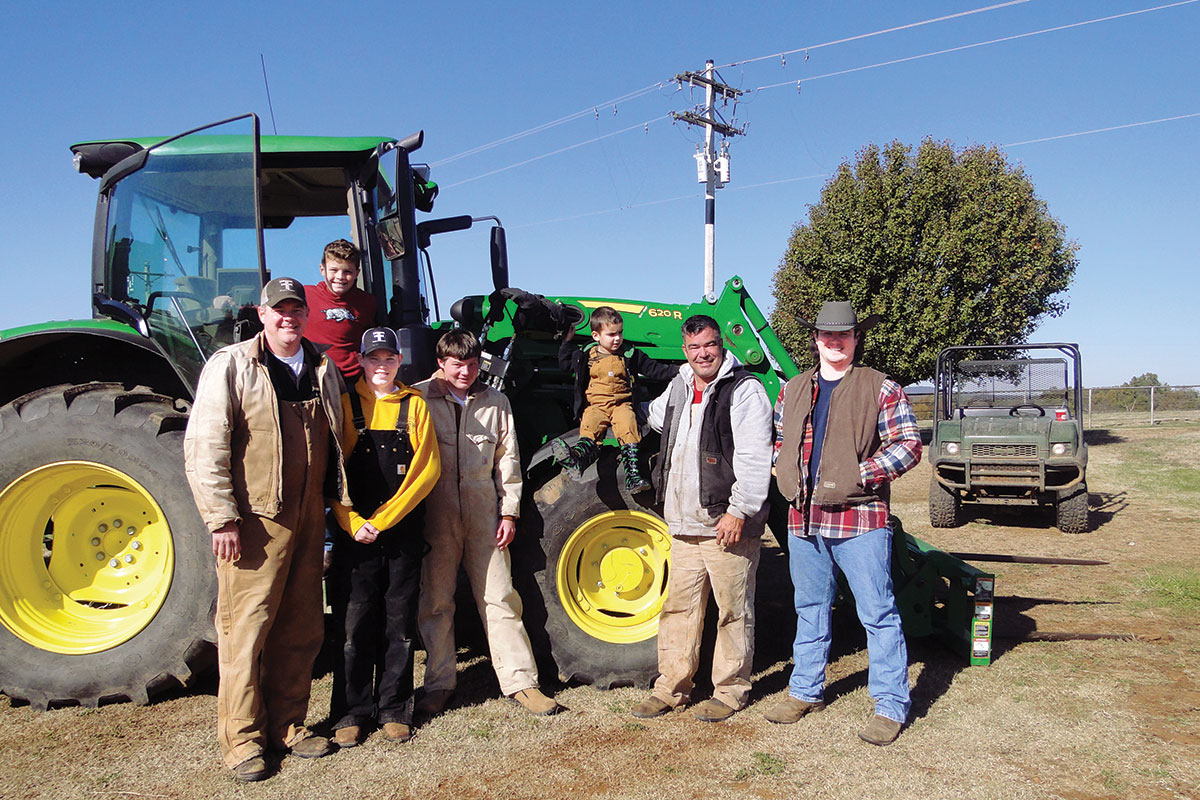 When Ricky Hogue and his wife Regina decided to sell their dairy business five years ago and go into raising beef cattle, they chose Salers (pronounced Sa’lair). With a unique background, the breed is considered among the oldest and most genetically pure of all European cattle, a fact that produces positive effects on the predictability of Salers in crossbreeding programs. Ricky’s cattle are mainly a cross between Salers and Angus, and some are Brangus mix. They own 460 acres, and lease another 500 acres for pasture. They run 250 head of momma cows, half calving in the fall and half calving in the spring, and eight bulls. Years ago, his dad, mom and seven brothers and sisters worked the fruit harvest in California, saved their money, then came back to Arkansas and bought the land which is now the home place.
When Ricky Hogue and his wife Regina decided to sell their dairy business five years ago and go into raising beef cattle, they chose Salers (pronounced Sa’lair). With a unique background, the breed is considered among the oldest and most genetically pure of all European cattle, a fact that produces positive effects on the predictability of Salers in crossbreeding programs. Ricky’s cattle are mainly a cross between Salers and Angus, and some are Brangus mix. They own 460 acres, and lease another 500 acres for pasture. They run 250 head of momma cows, half calving in the fall and half calving in the spring, and eight bulls. Years ago, his dad, mom and seven brothers and sisters worked the fruit harvest in California, saved their money, then came back to Arkansas and bought the land which is now the home place.
“I grew up right here on this farm,” Ricky said. “My dad milked cows and I helped him. After graduating high school, I worked for probably a year off the farm, then came back, leased this farm from Mom and bought some dairy cows. Right after that I met Regina and we got married and started our family, (now of) four daughters, Alesha, Kimberly, Julie and Ricki Lou. Later we bought the place from my mom. In 1983 we bought our first Salers cows, a new breed for this part of the country. We had 50 Salers in conjunction with the dairy herd.”
What Salers Offer
Ricky's early experience with the economic advantages of raising Salers proved they calve easy, have good maternal instincts and carcass merit. These traits led him to stick with that breed when he increased his herd size. Because Salers cattle are native to the rough, rocky, mountainous regions of central France, they are by nature foragers with an innate range ability to utilize grasses. They get out and move and find grass where other breeds won’t go.
“Our pastures are a mix of fescue and Bermuda,” Ricky said. “Fescue came into Searcy County 50 to 60 years ago. It’s such a tough grass, it’s the backbone in this country. I let my cattle graze as long as there’s grass left, and feed them some grain, and try not to start feeding hay until January.”
Ricky bales his own hay, on average between 800 to 1,000 round bales each year. Under good conditions, if he doesn’t have a dry summer or a long winter, he has enough hay to last each season without having to buy any.
The Transition
“Our girls grew up here,” Ricky said, “and they were all involved, raised their own dairy and beef cattle and showed them at the local and regional livestock events. Then, five years ago, we sold out our dairy cows and went into just the beef-cow business. All our bulls are black Salers we bought at the MacDonald Ranches in North Dakota. My wife is as much a part of our cattle business as I am, and she keeps our records.”
Regina never lived on a farm until she married Ricky when she was 18 years old. Now, 40 years later, she said, “I couldn’t go back to city life now, I love being a farmer’s wife. All four of the girls and our 11 grandkids are living close enough to visit often. Some of the grandkids are already involved in helping us.”
“The Lord has blessed us here on this hill farm,” Ricky said, “We have always made a living off our land.”







